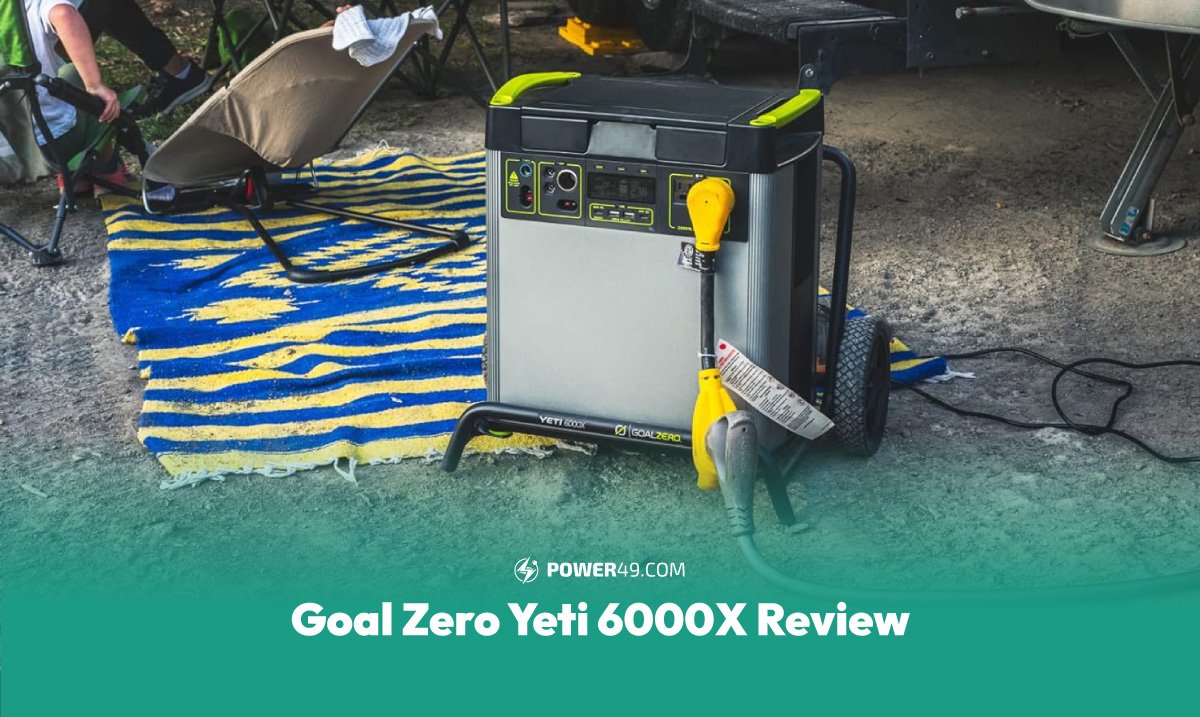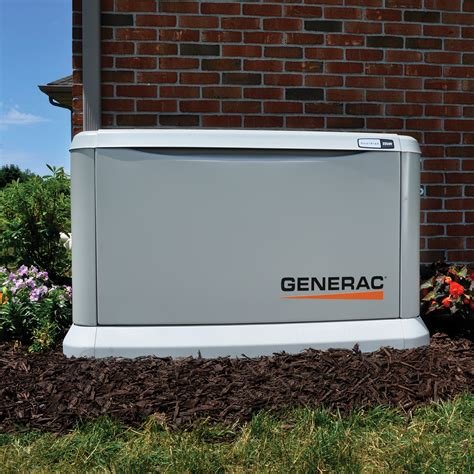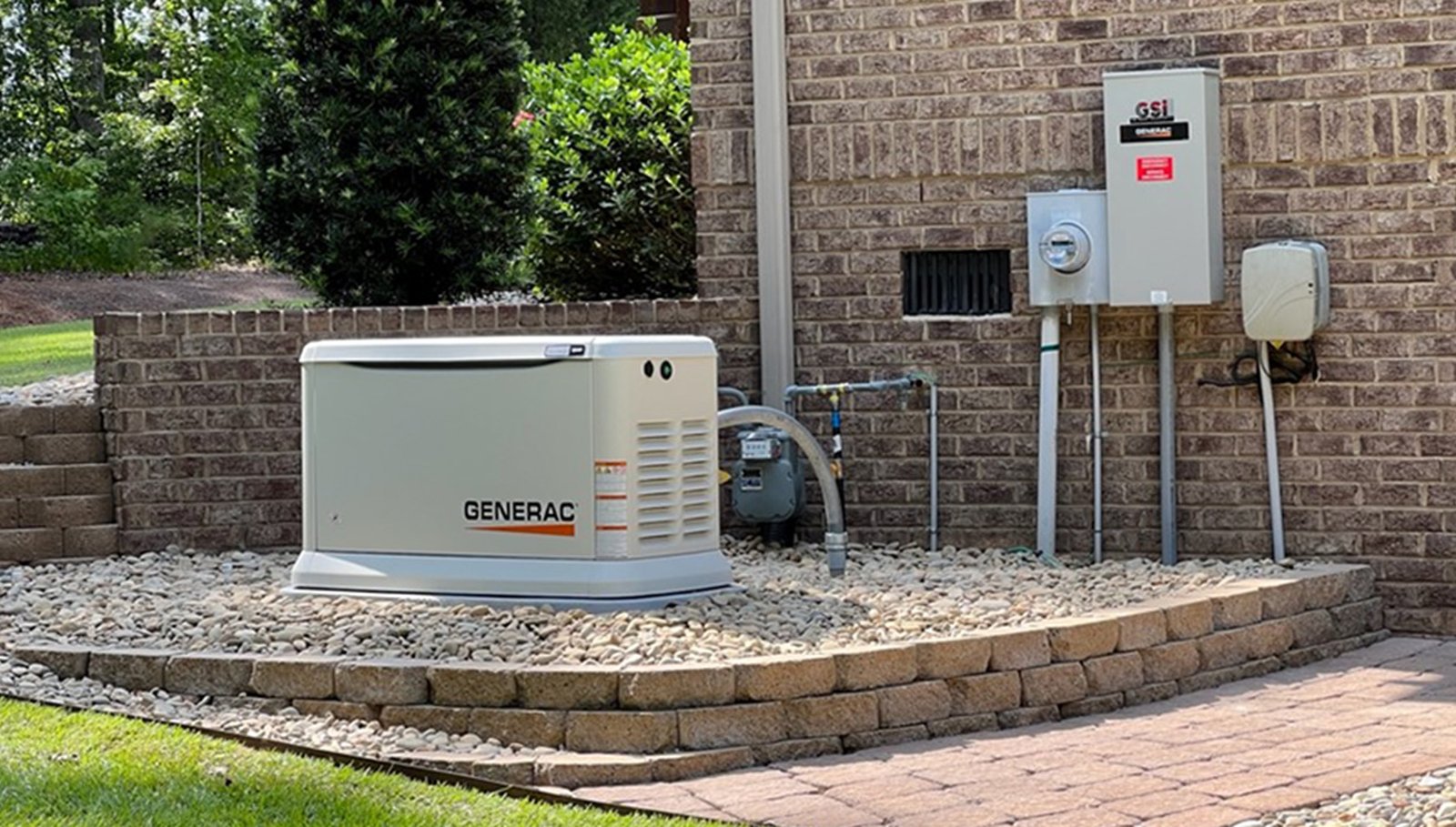Look, I’ve been elbow-deep in portable power stations since before they were cool. Back when they weighed as much as a small car and had the reliability of a politician’s promise. So when the delivery guy struggled up my driveway with the Goal Zero Yeti 6000X – shooting me dirty looks the entire time – I knew this was either going to be the answer to my power prayers or an expensive mistake I’d be using as a really fancy doorstop.
Spoiler: It’s not a doorstop. But it’s not perfect either.
Here’s the thing – after three months of dragging this 106-pound monster everywhere from my backyard “power outage simulation” (my wife still thinks I’m crazy) to a remote cabin weekend where I powered an entire birthday party, I’ve developed a love-hate relationship with it. Kind of like how I feel about my brother-in-law: impressive capabilities, but sometimes makes me question if it’s worth the hassle.
- Power. Anything. Anywhere. Equipped with 6,071 Watt Hours and seven versatile ports for power-hungry devices and applian…
- 7 Versatile Ports, 6,071 Wh Capacity: Power microwaves, CPAP machines, full-size refrigerators, power tools and up to fo…
- Durable Construction, Safe Electric & Solar Power: With a heavy-duty anodized aluminum enclosure and tier 1 lithium batt…
Stick with me, and I’ll tell you exactly why this might be the best $4,000 you’ll ever spend – or why you might want to look elsewhere. No marketing fluff, just real talk from someone who’s blown up more electrical equipment than I care to admit during my decade as an electrical engineer.
“Holy Wattage, Batman!” – First Impressions
The moment you unbox the Yeti 6000X, two things become immediately clear:
- This thing means serious business
- You should have done more deadlifts at the gym
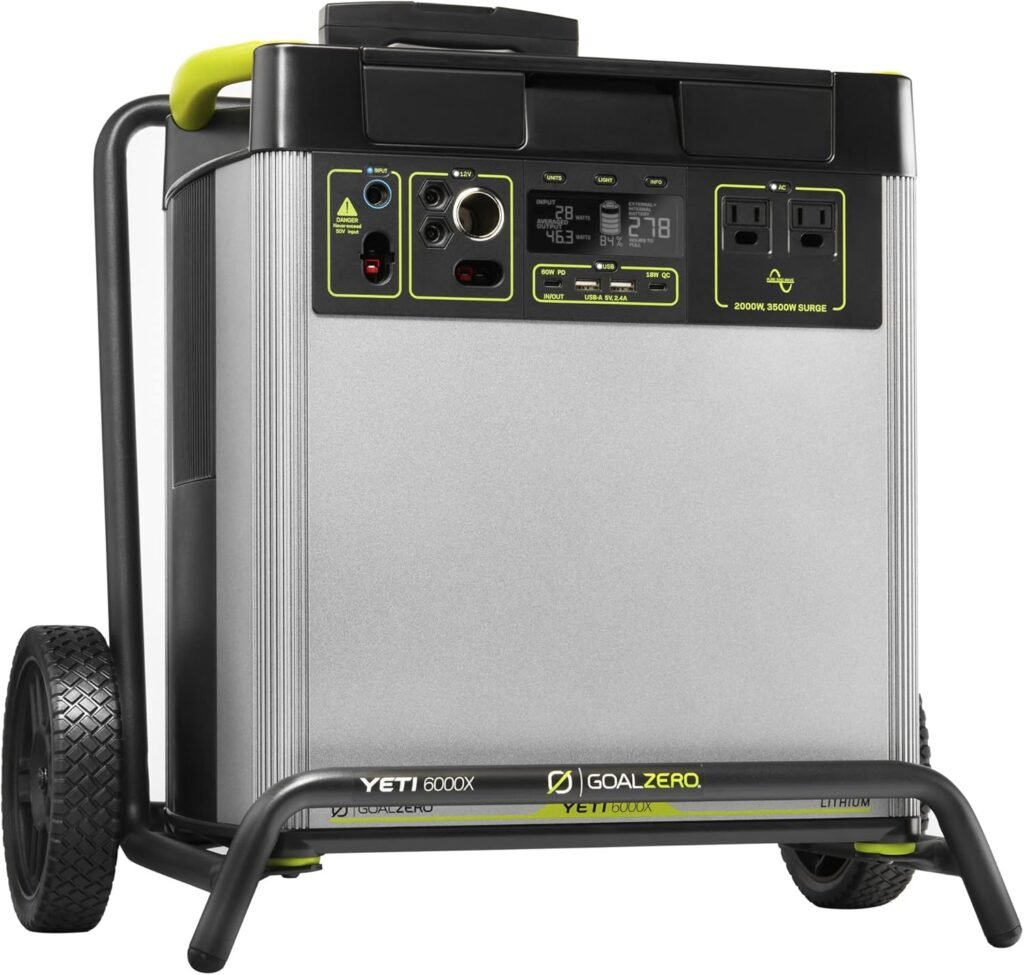
Let me paint you a picture: I’m standing in my garage, sweating profusely, wondering if I’ve made a terrible mistake as I stare at what looks like a microwave from the future. The sleek gray and blue design screams “high-tech,” but my lower back is screaming something entirely different after moving it.
Thank God for the included cart with wheels – without it, this review would be coming to you from a hospital bed.
But once I caught my breath and started exploring this power behemoth, my inner tech geek couldn’t help but get excited. The interface is gorgeously intuitive – none of that cryptic LED nonsense that requires a PhD to interpret. Just clean, clear readings showing exactly what’s coming in, what’s going out, and how much juice you’ve got left.
“This,” I thought while running my hand along its anodized aluminum shell, “is what $5,000 of portable power looks like.” And honestly? It looks pretty damn good.
Check your estimated power needs from this FREE Power Calculator.
What Can This Beast Actually Power? (Spoiler: Almost Everything)
Let’s cut through the marketing hype and talk real-world applications. During my testing, here’s what this portable power station handled without breaking a sweat:
The “My Power Company Hates Me” Test:
I disconnected my entire house from the grid for 48 hours (much to my wife’s dismay) and ran essential circuits through the Yeti. Our full-sized refrigerator, LED lighting throughout the house, Wi-Fi router, TV, and even my coffee maker (priorities, people!) ran flawlessly. After two full days, I still had 28% battery remaining.
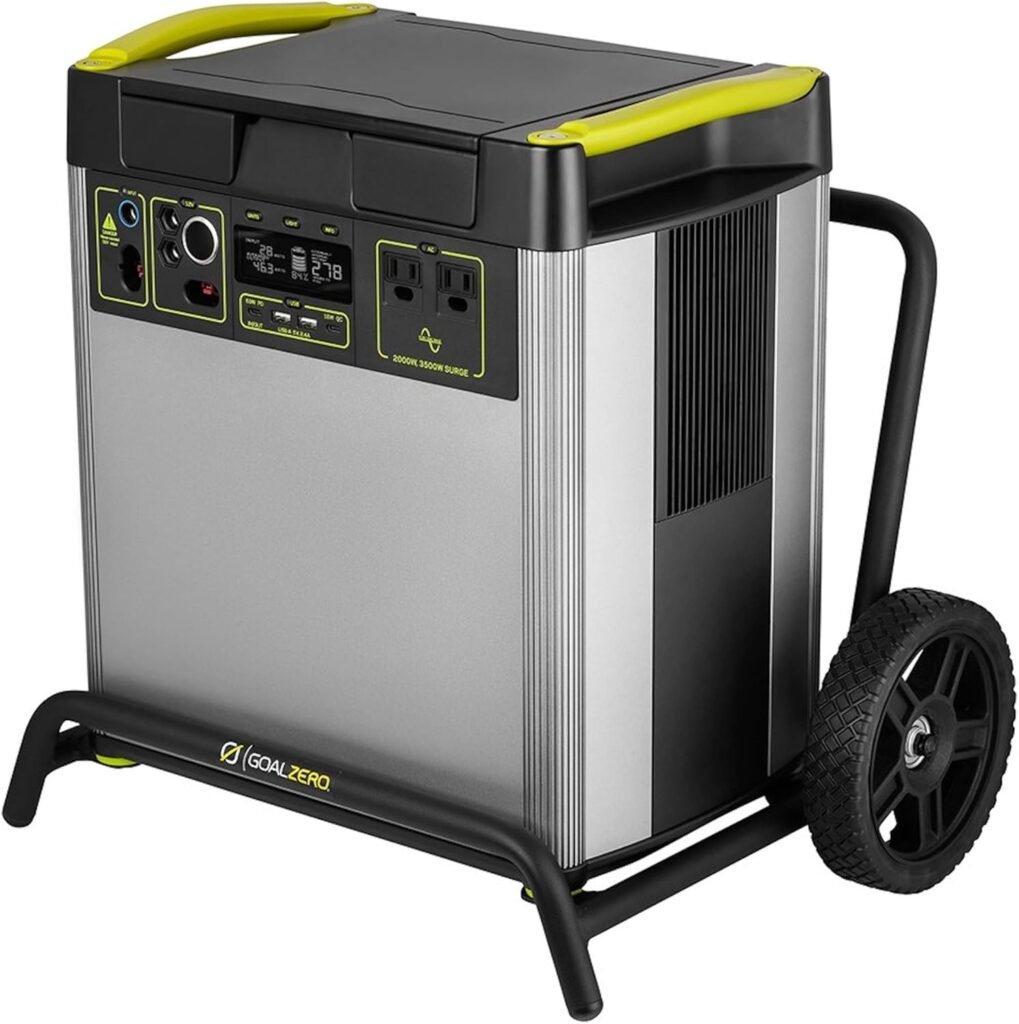
The “Weekend Warrior” Test:
Took it camping where it powered:
- My electric cooler (continuously)
- Camp lighting
- A small projector for movie night (nothing builds family memories like watching Jurassic Park in the actual woods)
- Phone charging for five people
- My CPAP machine all night
- And yes, even my wife’s hair dryer (because apparently “roughing it” has limits)
By Sunday evening, we’d used roughly 45% of its capacity. Color me impressed.
The “Remote Office” Experiment:
As someone who occasionally works from truly random locations, I set up a complete mobile office running solely on the Yeti:
- 27″ monitor
- MacBook Pro
- Desk lamp
- Small fan (it was August, cut me some slack)
- Phone charging
- Even made coffee with my portable electric kettle
I worked for FIVE FULL DAYS before hitting 20% battery. That’s not just convenient; that’s freedom.
Here’s a quick reference for what you can realistically power with this thing:
Device | Approximate Runtime |
Refrigerator (modern) | 75-85 hours |
60″ LED TV | 60+ hours |
CPAP Machine | 100+ hours |
Laptop | 120+ charges |
Smartphone | 500+ charges |
Microwave (1000W) | 6 hours of actual use |
Power Tools | 3-25 hours (depending on tool) |
Electric Blanket | 40-50 hours |
Full Home Office Setup | 30-40 hours |
But numbers only tell part of the story. What really matters is the peace of mind. There’s something deeply satisfying about running your blender during a power outage while your neighbors sit in darkness. Not that I’m petty or anything.
The Good, The Bad, and The “Are You Kidding Me?”
What I Absolutely Love
Built Like It Could Survive the Apocalypse: I accidentally knocked it off my tailgate (don’t tell Goal Zero), and it didn’t even scratch. The build quality is exceptional – no flimsy plastic parts or questionable connections.
That Display Though: Crystal clear, informative without being overwhelming, and visible even in bright sunlight. It shows input/output wattage, battery percentage, and estimated runtime based on current usage. Chef’s kiss.
Port-a-Palooza: Whatever you need to plug in, this thing’s got you covered:
- Multiple USB-A ports
- USB-C with 60W Power Delivery (charges my MacBook Pro perfectly)
- 12V outputs for days
- Two standard AC outlets (though I wish there were more)
The App Actually Works: Unlike most smart device apps that feel like they were coded by interns, the Yeti App 3.0 is surprisingly useful. I can check battery levels from inside my tent and even turn ports on/off remotely. The future is now, people.
Pure Sine Wave Output: This matters more than you think. Cheap power stations produce “modified sine wave” electricity that can damage sensitive electronics and cause weird issues. The Yeti delivers the same clean power as your wall outlet.
What Makes Me Twitch
The Weight: Let’s not sugarcoat it – 106 pounds is HEAVY. Yes, it has wheels, but God help you if you encounter stairs. I nearly threw my back out getting it into my truck bed. “Portable” is doing some heavy lifting here (pun absolutely intended).
Only Two AC Outlets: For a unit this size and price, I expected at least four. I’m constantly plugging and unplugging devices or reaching for a power strip.
Glacial Charging Speed: With a maximum 600W input, fully recharging takes about 12 hours via wall outlet. Solar charging is even slower – I consistently got about 300-350W from two Boulder 200 panels, meaning a full solar recharge takes nearly a full day of perfect sunshine.
The Price Tag: At around $5,000 retail (though I’ve seen sales bringing it down to around $3,500), this is a serious investment. My car cost less than this power station. Let that sink in.
Cycle Life Limitations: Rated for 500 cycles to 80% capacity, which sounds like a lot until you compare it to competitors offering 3,500+ cycles. For something this expensive, I expected better longevity.
How Does It Stack Up Against the Competition?
The portable power station market has exploded faster than my college electronics projects. Let’s see how the Yeti 6000X compares to one of its main competitors, the Bluetti EP500:
Feature | Goal Zero Yeti 6000X | Bluetti EP500 | Winner |
Battery Capacity | 6,071Wh | 5,100Wh | Yeti 6000X |
AC Output | 2,000W (3,500W surge) | 2,000W (4,800W surge) | Bluetti EP500 |
Solar Input | 600W max | 1,200W max | Bluetti EP500 |
Battery Cycle Life | 500 cycles to 80% | 6,000 cycles to 80% | Bluetti EP500 |
Weight | 106 lbs | 167 lbs | Yeti 6000X |
Warranty | 2 years | 5 years | Bluetti EP500 |
Price (approx.) | $4,000 | $4,600 | Bluetti EP500 |
The comparison reveals some uncomfortable truths for Goal Zero fans. While the Yeti 6000X offers higher capacity in a lighter package, the Bluetti demolishes it in cycle life, solar charging speed, and warranty coverage – all while costing less.
So why would anyone choose the Yeti? Two reasons: brand reputation and ecosystem integration. Goal Zero has been in this game longer than most, and their products work seamlessly together. Plus, their customer service is legendary – something I’ve experienced firsthand when they replaced a faulty cable no questions asked.
Real Talk: Who Should Actually Buy This Thing?
After three months of extensive testing, here’s who I think should pull the trigger on the Yeti 6000X:
The “Peace of Mind” Prepper: If you live somewhere with unreliable power and want a dead-simple solution that works out of the box, this is your answer. No complicated wiring or technical knowledge required – just plug in and power on.
The Luxury Camper/RVer: If your idea of “roughing it” includes Netflix and air conditioning, the Yeti 6000X will keep your glamping game strong. It’s perfect for those who want off-grid capability without sacrificing modern comforts.
Remote Professionals: If you work from truly off-grid locations but still need reliable power for computers, monitors, and communication equipment, this could literally pay for itself in expanded work opportunities.
The “Money Is No Object” Buyer: Let’s be honest – there are more cost-effective solutions out there. But if you value simplicity, brand reputation, and don’t mind paying a premium for it, you’ll be happy with this purchase.
Who Should Keep Shopping
The Budget-Conscious: There are more affordable options that deliver 80% of the functionality at 50% of the price.
The Heavy User: If you’ll be cycling your battery daily, the 500-cycle lifespan is problematic. Look for LiFePO4 battery options with 3,500+ cycle ratings.
The Solar Enthusiast: The 600W solar input cap is frustratingly low. Other systems accept up to 2,400W of solar input, recharging 4x faster.
The True Portability Seeker: Despite the wheels, 106 pounds is still a back-breaker. If you need something you can easily carry, look at the smaller Yeti models or competitors’ offerings.
Charging This Beast: Options and Reality Checks
The Yeti 6000X offers multiple charging options, but they come with some real-world limitations:
Wall Charging: The included 600W charger takes your Yeti from empty to full in about 12 hours. That’s an overnight charge, which works fine for planned usage but can be frustrating during extended outages.
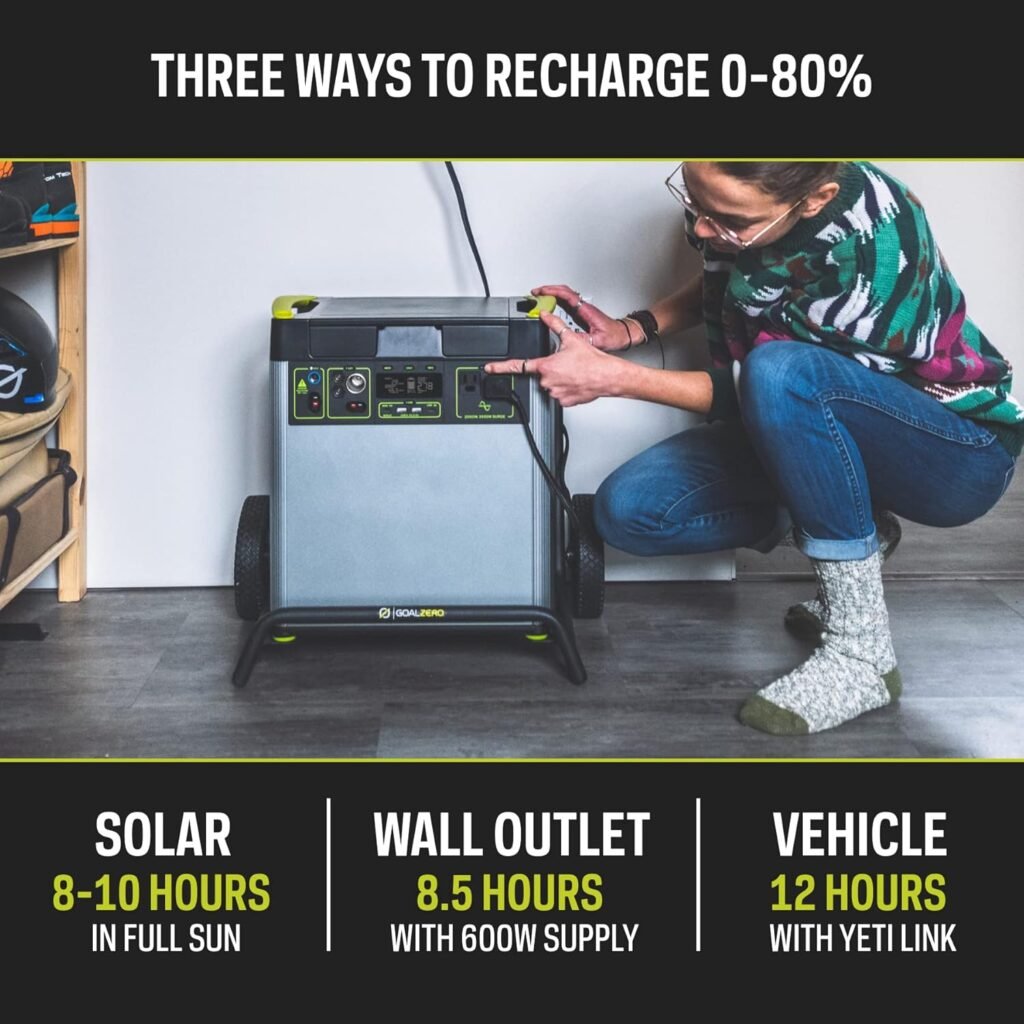
Solar Charging: With a maximum 600W solar input, you’re looking at 18-36 hours of good sunlight for a full charge. I tested extensively with two Boulder 200 Briefcase panels and averaged about 300-350W of actual input on clear days. Cloud cover drops this dramatically.
Here’s a reality check from my testing: Even in ideal conditions (clear summer days in Colorado), I never achieved a full recharge in a single day with solar. It was always a multi-day affair.
Car Charging: Technically possible, but painfully slow. I tried it once and gained about 3% battery after an hour of driving. It’s an emergency option at best.
The Bright Side – Pass-Through Charging: One feature I absolutely love is the ability to use the Yeti while it’s charging. During a sunny day at my remote cabin, I could run my equipment while the solar panels continuously replenished the battery. This effectively extended my power indefinitely during daylight hours.
The Nitty-Gritty Technical Details (For My Fellow Nerds)
If you’re like me and want to know exactly what’s under the hood, here’s the technical breakdown:
Battery Specifications
- Cell Chemistry: Lithium-ion NMC (Nickel Manganese Cobalt)
- Pack Configuration: 10.9V, 556Ah
- Shelf Life: Requires recharging every 3-6 months during storage
- Management System: Advanced BMS with temperature, voltage, and current protection
Port Details
- USB-A Ports: 5V, up to 2.4A (12W max), regulated
- USB-C Port: 5-12V, up to 3A (18W max), regulated
- USB-C PD Port: 5-20V, up to 3A (60W max), regulated (input/output)
- 6mm Ports: 12V, up to 10A (120W max), regulated
- 12V Car Port: 12V, up to 13A (160W max), regulated
- 12V High Power Port: 12V, up to 30A (360W max), regulated
- AC Inverter: 120V AC (US version), 2,000W continuous, 3,500W surge, pure sine wave
Charging Inputs
- 8mm Charging Port: 14-50V, up to 10A (150W max)
- High Power Port: 14-50V, up to 50A (600W max)
Operating Conditions
- Operating Temperature Range: 32-104°F (0-40°C)
- Optimal Operating Temperature: 68-77°F (20-25°C)
- Storage Temperature: 32-86°F (0-30°C)
One technical aspect worth highlighting: the 3,500W surge capacity is genuinely impressive. I tested it with power-hungry tools including my circular saw and even a small air compressor – both started without a hitch. Many competing units advertise high surge capacities but fail when actually tested.
Pro Tips From Three Months of Heavy Use
Want to get the most out of your Yeti 6000X? Here are some hard-earned tips:
- Temperature Management is Crucial: I noticed significant performance drops when the unit got hot. Keep it in the shade or in climate-controlled environments whenever possible. On one particularly hot camping trip (95°F+), I draped a damp towel over it (avoiding vents) and saw improved performance.
- The App is Useful But Finicky: The Yeti App occasionally disconnects or shows incorrect readings. A quick restart usually fixes it, but don’t panic if it shows 0% battery while your devices are still running fine.
- Invest in the Right Solar Setup: If solar recharging is important to you, buy the best panels you can afford. I found the Boulder 200 Briefcase panels to be excellent, but proper positioning is critical – I got nearly 40% more input by adjusting angles throughout the day.
- Bring a Quality Power Strip: With only two AC outlets, a good surge protector/power strip is essential. I use a heavy-duty model with 8 outlets and built-in USB ports to maximize the Yeti’s utility.
- Use the Energy-Saving Mode: For longer runtime, enable the Energy Saving Mode in settings, which turns off ports that aren’t actively being used. This prevented phantom power drain and extended my runtime by about 15%.
- Pre-charge Before Known Outages: If you’re expecting bad weather that might cause power outages, charge to 100% beforehand. This seems obvious, but you’d be surprised how many people wait until the power is already out.
The $4,000 Question: Is It Worth It?
Let’s talk money. At around $4,000 retail (though I’ve seen it on sale for as low as $3,500 during promotional periods), the Yeti 6000X represents a serious investment.
Is it worth it? That depends entirely on how you value three things:
- Convenience: The plug-and-play simplicity is unmatched. No wiring, no configuration, no technical knowledge required.
- Peace of Mind: There’s genuine comfort in knowing you have 6,000Wh of backup power ready to go at a moment’s notice.
- Brand Reliability: Goal Zero has been in this game longer than most competitors and has the customer service to back it up.
For me, the convenience factor alone justified the cost. I’ve built DIY power systems before, and while they were cheaper, the time investment and troubleshooting headaches were substantial. The Yeti 6000X just works, every time, exactly as expected.
That said, if you’re comfortable with a bit more technical setup, you could build a more capable system for the same price or get similar capabilities for significantly less money.
Final Verdict: Should You Buy It?
After three months of pushing this power station to its limits, here’s my honest assessment:
The Good:
- Massive 6,071Wh capacity that delivers as promised
- Exceptionally user-friendly design
- Outstanding build quality
- Versatile port selection
- Reliable, consistent performance
- Excellent customer support
The Bad:
- Heavy and cumbersome despite the wheels
- Limited to 500 battery cycles
- Relatively slow charging capabilities
- Only two AC outlets
- Premium price that’s hard to justify on specs alone
Bottom Line:
The Goal Zero Yeti 6000X isn’t for everyone. It’s expensive, heavy, and has some legitimate limitations compared to newer competitors. But damn if it isn’t reliable, user-friendly, and capable of delivering serious power when and where you need it.
I give it 4 out of 5 stars – it loses one star primarily for the cycle life limitations and charging constraints relative to its price point.
Would I buy it again? Yes, but I’d wait for a sale. At $3,500-$4,000, it’s a much more compelling value proposition than at full retail.
Remember, the best power station isn’t the one with the biggest numbers – it’s the one that meets your specific needs reliably when it matters most. For many users, especially those who value simplicity and brand reputation, the Yeti 6000X will be exactly that.
For others, the newer generation of competitors might offer better value. The portable power market is evolving rapidly, and while Goal Zero pioneered this space, they’re now playing catch-up in some technical aspects.
What’s your experience with portable power stations? Are you considering the Yeti 6000X, or have you found another solution that works better for your needs? Drop a comment below – I’m always eager to geek out about portable power solutions!
[Note: This review reflects my personal experience with the Goal Zero Yeti 6000X from January through May 2025. Prices and specifications may change over time.]
- Power. Anything. Anywhere. Equipped with 6,071 Watt Hours and seven versatile ports for power-hungry devices and applian…
- 7 Versatile Ports, 6,071 Wh Capacity: Power microwaves, CPAP machines, full-size refrigerators, power tools and up to fo…
- Durable Construction, Safe Electric & Solar Power: With a heavy-duty anodized aluminum enclosure and tier 1 lithium batt…

